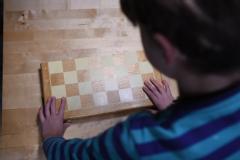Chess has the power to shape the minds of children and prepare them for challenges that they may later face in life. T1. Start Slow – The board, the pieces, and the rules Introduce the board and the squares first. Then teach each piece individually and show their full range of movement. Use mini-games like pawns vs. pawns only or just pawns & kings. Only use the full set when the student can demonstrate full knowledge of every piece. Once students can play with all of the pieces, spend a lot of time on the differences between check, checkmate, and stalemate. 2. Encourage Thoughtful Calculation Tell students that chess is the only game where you can tell the future! Tell them to list the options in their heads. Make sure they are calculating the opponent’s moves as well as their own. Then choose the best move after they take their time. And, for the perfectionists, to choose good practical moves instead of trying to calculate everything. 4. Focus on Principles Once students demonstrate an understanding of the basic rules, the basic principles behind endgame and opening play are essential. Students need to learn endgame principles such as opposition and the ‘square of the pawn’ along with learning how to checkmate with King & Queen and King & Rook. They should focus on the steps/goals (drive the enemy king to the edge of the board) first and foremost rather than rote memorization of a technique. The same is true for the opening. Memorizing opening lines is not important and may be detrimental to their play in the long run. If they know the major principles of development, central control and king safety, then they will not need to learn any opening lines until they reach higher levels of play. 5. Use Examples from Real Games Students need role models as well as model games. Show games that illustrate basic checkmate patterns and tactics.








